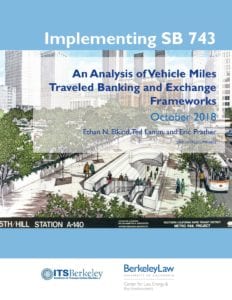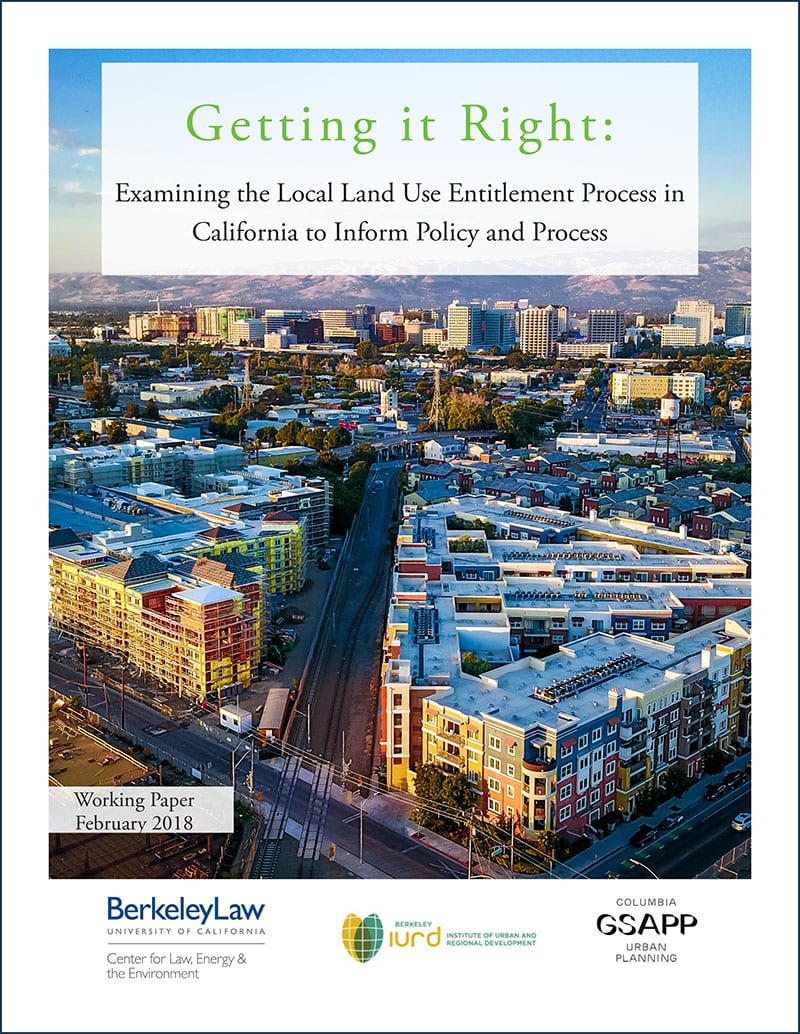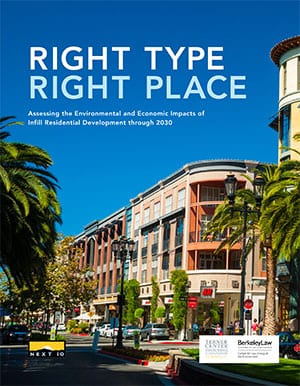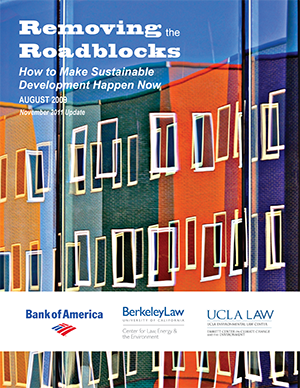California faces a chronic under supply of housing and new housing development often occurs in low-density areas where transportation options are limited or entirely unavailable. Our infill development reports examine policy options to encourage dense housing with greater access to public transportation.
October 2018
Implementing SB 743: An Analysis of Vehicle Miles Traveled Banking and Exchange Frameworks
California law requires developers of new projects, like apartment  buildings, offices, and roads, to reduce the amount of overall traffic the projects generate. To facilitate compliance with this new requirement under Senate Bill 743 (Steinberg, 2013), some state and local leaders seek to create special “banks” or “exchanges” to allow developers to fund off-site projects that reduce driving miles, such as new bike lanes, transit, and busways.
buildings, offices, and roads, to reduce the amount of overall traffic the projects generate. To facilitate compliance with this new requirement under Senate Bill 743 (Steinberg, 2013), some state and local leaders seek to create special “banks” or “exchanges” to allow developers to fund off-site projects that reduce driving miles, such as new bike lanes, transit, and busways.
Our new report, Implementing SB 743, provides a comprehensive review of key considerations for local and regional agencies tasked with crafting these innovative mechanisms to reduce vehicle miles traveled (VMT) and overall emissions.
February 2018
Getting it Right: Examining the Local Land Use Entitlement Process in California to Inform Policy and Process
 California’s housing affordability crisis has rightly received a great deal of attention by lawmakers, the press, and ordinary Californians alike. One important question in this discussion asks whether state environmental law (CEQA) or local land-use regulations, constrain housing development. To answer this question, we collected data on all residential development projects over a three-year period in five Bay Area cities, analyzed laws applicable to the development of these projects, and interviewed important actors in the residential development process. We found that these local governments are imposing discretionary review processes on all residential development projects of five or more units. That means even if these developments comply with the underlying zoning code, they require additional scrutiny from the local government before obtaining a building permit.
California’s housing affordability crisis has rightly received a great deal of attention by lawmakers, the press, and ordinary Californians alike. One important question in this discussion asks whether state environmental law (CEQA) or local land-use regulations, constrain housing development. To answer this question, we collected data on all residential development projects over a three-year period in five Bay Area cities, analyzed laws applicable to the development of these projects, and interviewed important actors in the residential development process. We found that these local governments are imposing discretionary review processes on all residential development projects of five or more units. That means even if these developments comply with the underlying zoning code, they require additional scrutiny from the local government before obtaining a building permit.
March 2017
Right Type, Right Place: Assessing the Environmental and Economic Impacts of Infill Residential Development through 2030
 California isn’t building enough housing to meet population growth, while the new housing that does get built is happening too often in the wrong places — on open space away from jobs. This report, the first academic, comprehensive evaluation of the potential economic and environmental impacts of infill housing development, finds that encouraging infill would spur economic growth, reduce monthly housing costs, and cut greenhouse gas emissions. We examined three scenarios: business-as-usual housing development, a “target” infill scenario with more multifamily and attached housing in close-in neighborhoods near rail transit, and a mixed scenario in between the two.
California isn’t building enough housing to meet population growth, while the new housing that does get built is happening too often in the wrong places — on open space away from jobs. This report, the first academic, comprehensive evaluation of the potential economic and environmental impacts of infill housing development, finds that encouraging infill would spur economic growth, reduce monthly housing costs, and cut greenhouse gas emissions. We examined three scenarios: business-as-usual housing development, a “target” infill scenario with more multifamily and attached housing in close-in neighborhoods near rail transit, and a mixed scenario in between the two.
July 2010
Plan for the Future: How Local Governments Can Help Implement California’s New Land Use and Climate Change Legislation
Many local governments need assistance developing the land use plans necessary to implement SB 375, the state’s landmark law that coordinates transportation and land use planning at the regional level. Key policy recommendations from this report include improved public outreach to encourage citizen participation in developing a vision for population growth and transportation in local communities, expanded financing for local government planning efforts, and streamlined local land use codes and sharing of best practices.
This project is part of the Climate Change & Business Research Initiative.
August 2009
Removing the Roadblocks: How to Make Sustainable Development Happen Now
California needs more sustainable real estate development, which includes compact housing, retail, and commercial projects that allow residents to walk and take transit for regular trips, in order to meet growing market demand and reduce the greenhouse gas emissions associated with driving. Key policy recommendations from this report include tax-increment financing for transit-oriented development, differential impact fees on sprawl and sustainable development, and more funding for local government planning.
This project is part of the Climate Change & Business Research Initiative.

